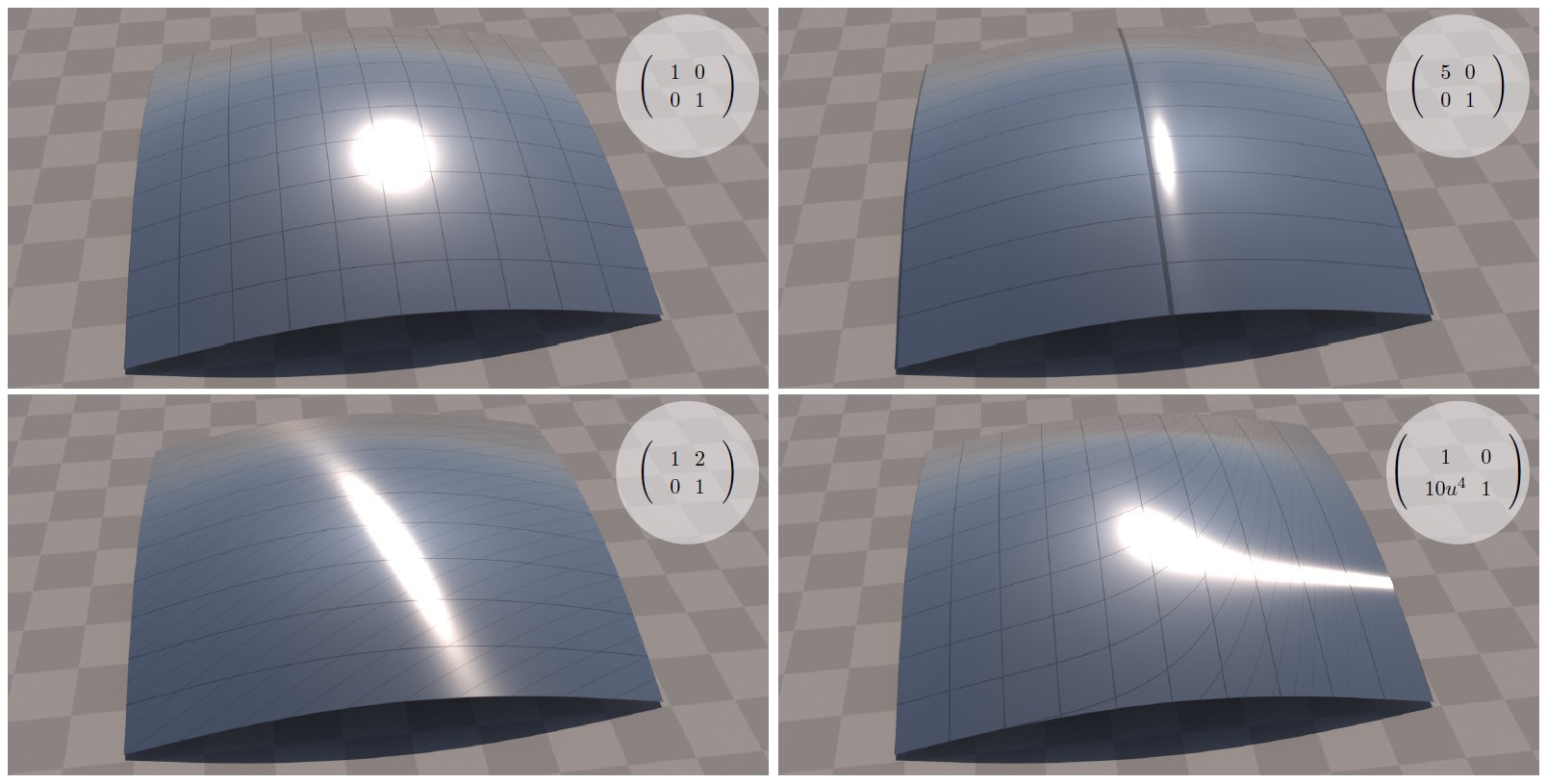Abstract
We derive a general result in microfacet theory: given an arbitrary microsurface defined via standard microfacet statistics, we show how to construct the statistics of its linearly transformed counterparts. A common use case of such transformations is to generate anisotropic versions of a given surface. Traditional anisotropic derivations based on varying the roughness of an isotropic distribution in an ellipse have a general closed-form formula only for the subclass of shape-invariant distributions. While our formulation is equivalent to these specific constructs, it is more general in two aspects: it leads to simple closed-form solutions for all distributions, including shape-variant ones, and works for all invertible 2D transform matrices. The latter is of particular importance in case of deformation of the macrosurface, since it can be approximated locally by a linear transformation in the tangent plane. We demonstrate our results using the Generalized Trowbridge-Reitz (GTR) distribution which is shape-invariant only in the special case of the popular Trowbridge-Reitz (GGX) distribution.
Play Video
